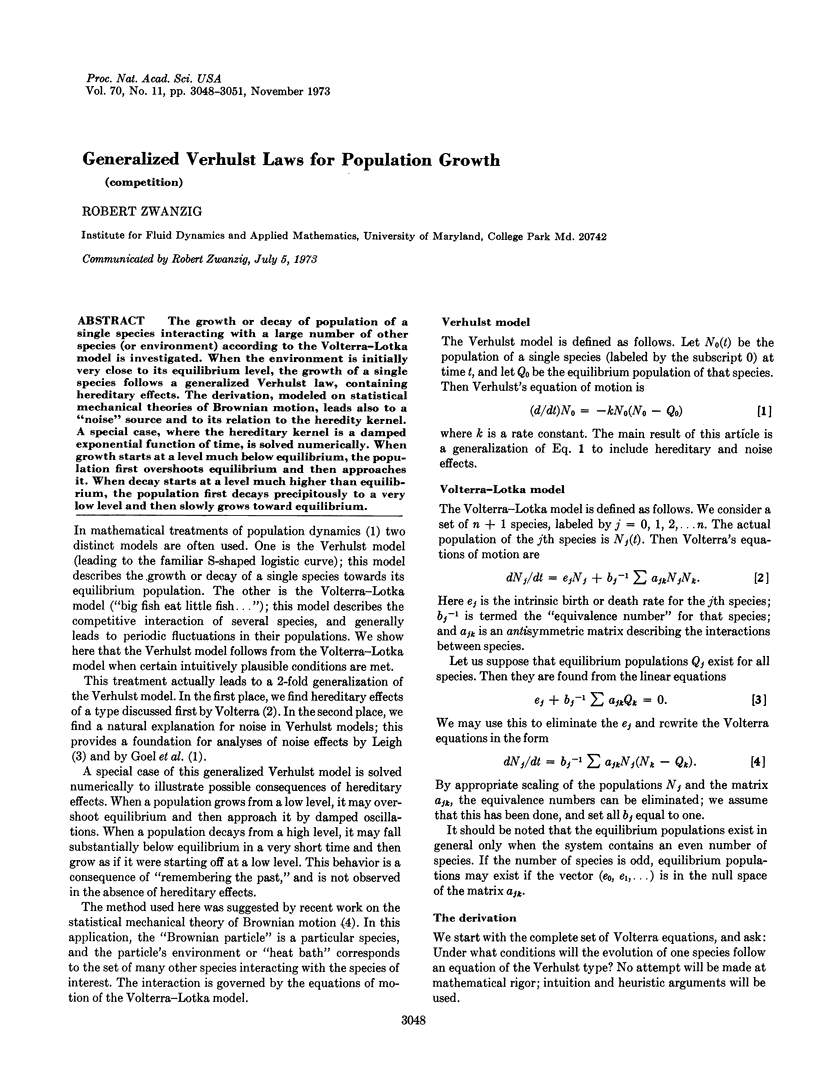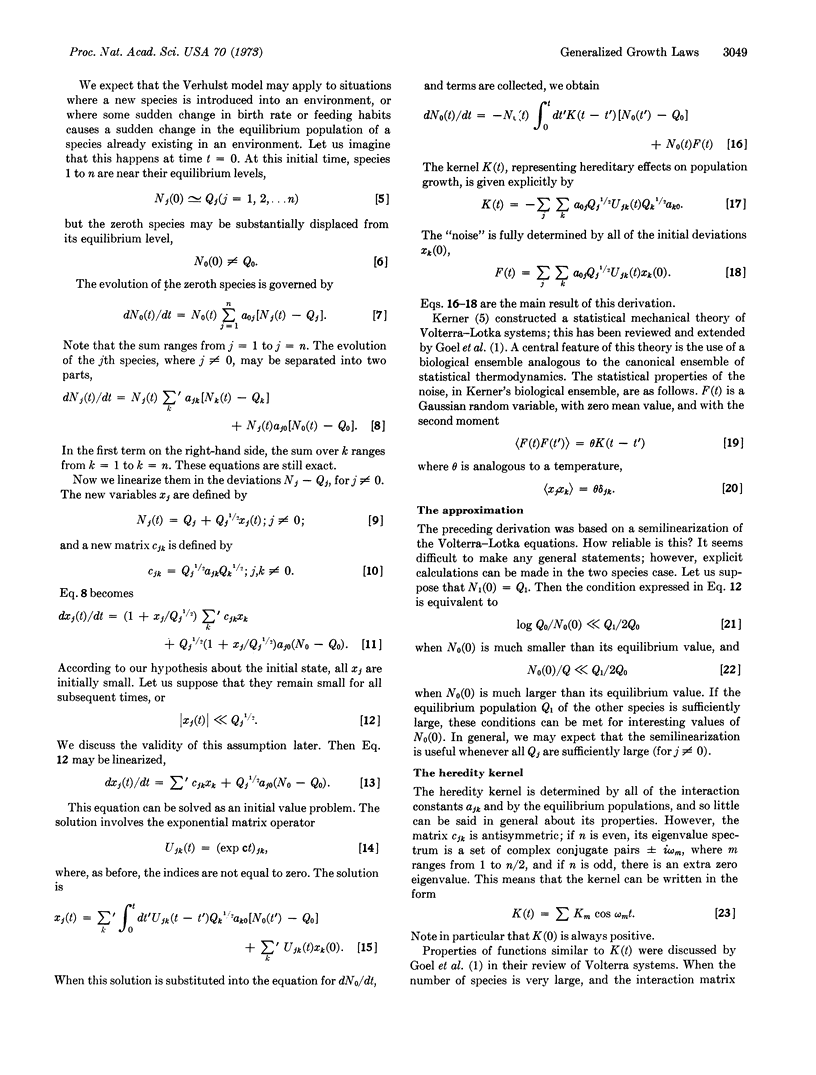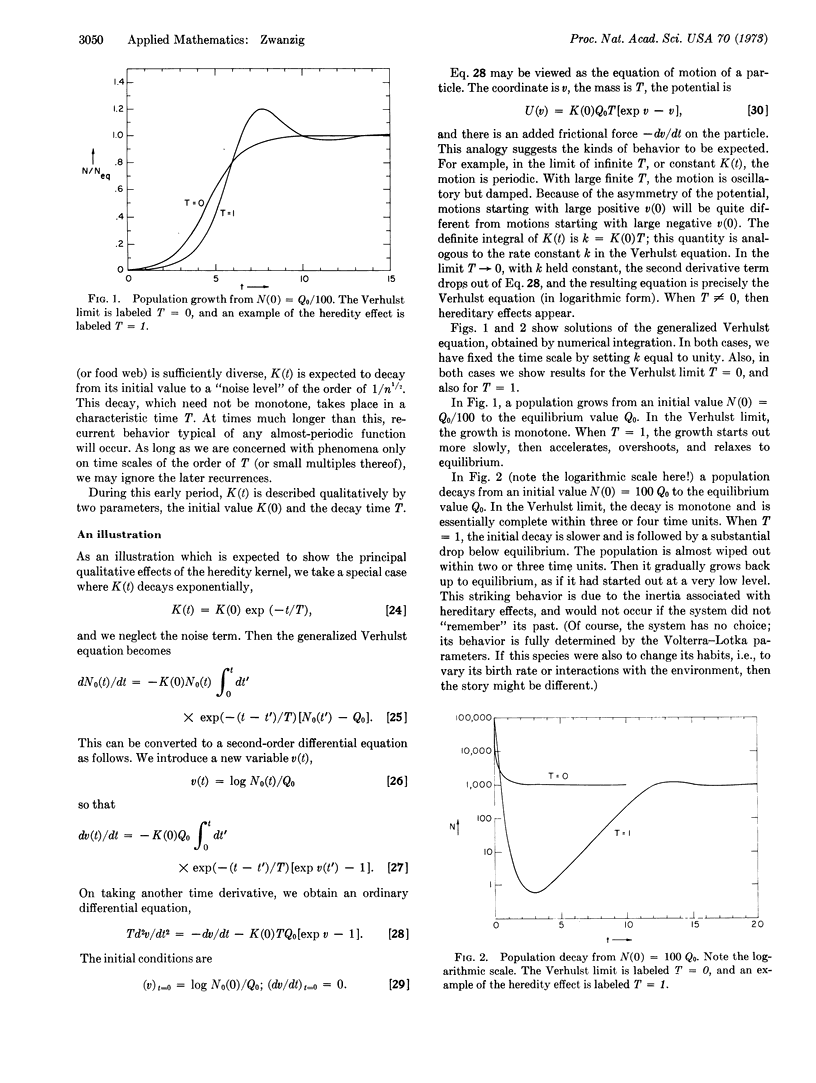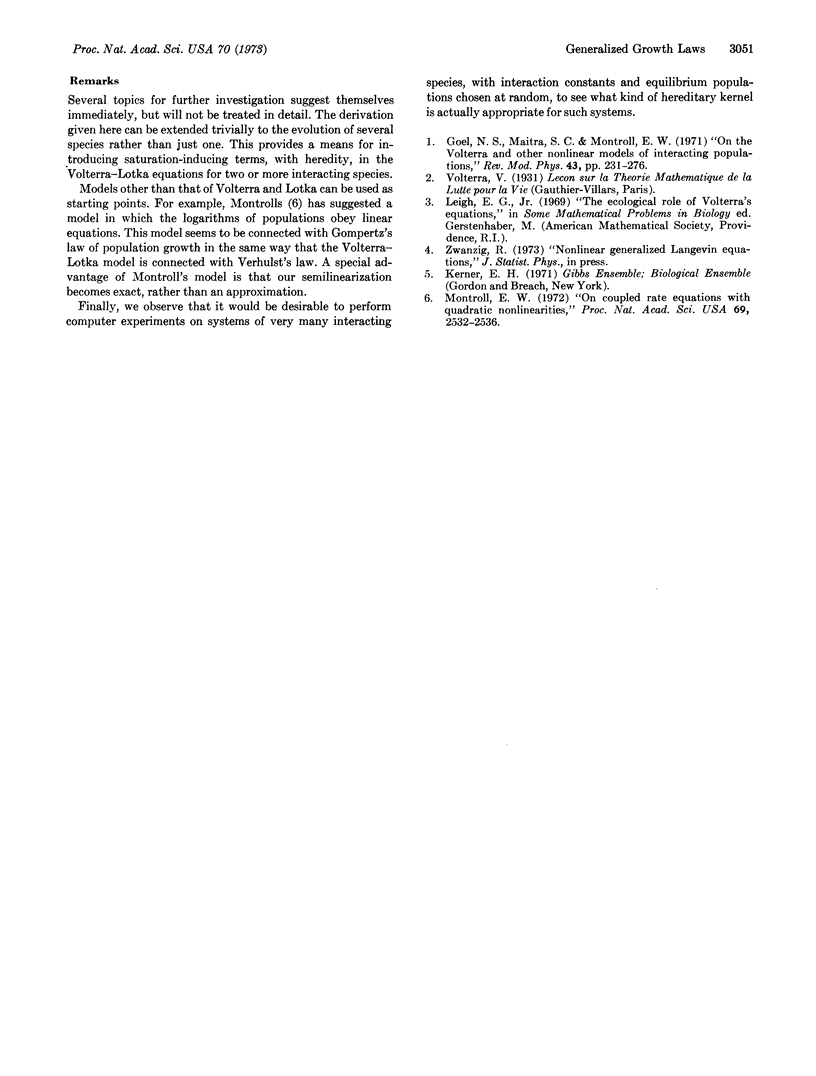Abstract
The growth or decay of population of a single species interacting with a large number of other species (or environment) according to the Volterra-Lotka model is investigated. When the environment is initially very close to its equilibrium level, the growth of a single species follows a generalized Verhulst law, containing hereditary effects. The derivation, modeled on statistical mechanical theories of Brownian motion, leads also to a “noise” source and to its relation to the heredity kernel. A special case, where the hereditary kernel is a damped exponential function of time, is solved numerically. When growth starts at a level much below equilibrium, the population first overshoots equilibrium and then approaches it. When decay starts at a level much higher than equilibrium, the population first decays precipitously to a very low level and then slowly grows toward equilibrium.
Keywords: competition
Full text
PDF



Selected References
These references are in PubMed. This may not be the complete list of references from this article.
- Montroll E. W. On coupled rate equations with quadratic nonlinearities. Proc Natl Acad Sci U S A. 1972 Sep;69(9):2532–2536. doi: 10.1073/pnas.69.9.2532. [DOI] [PMC free article] [PubMed] [Google Scholar]


